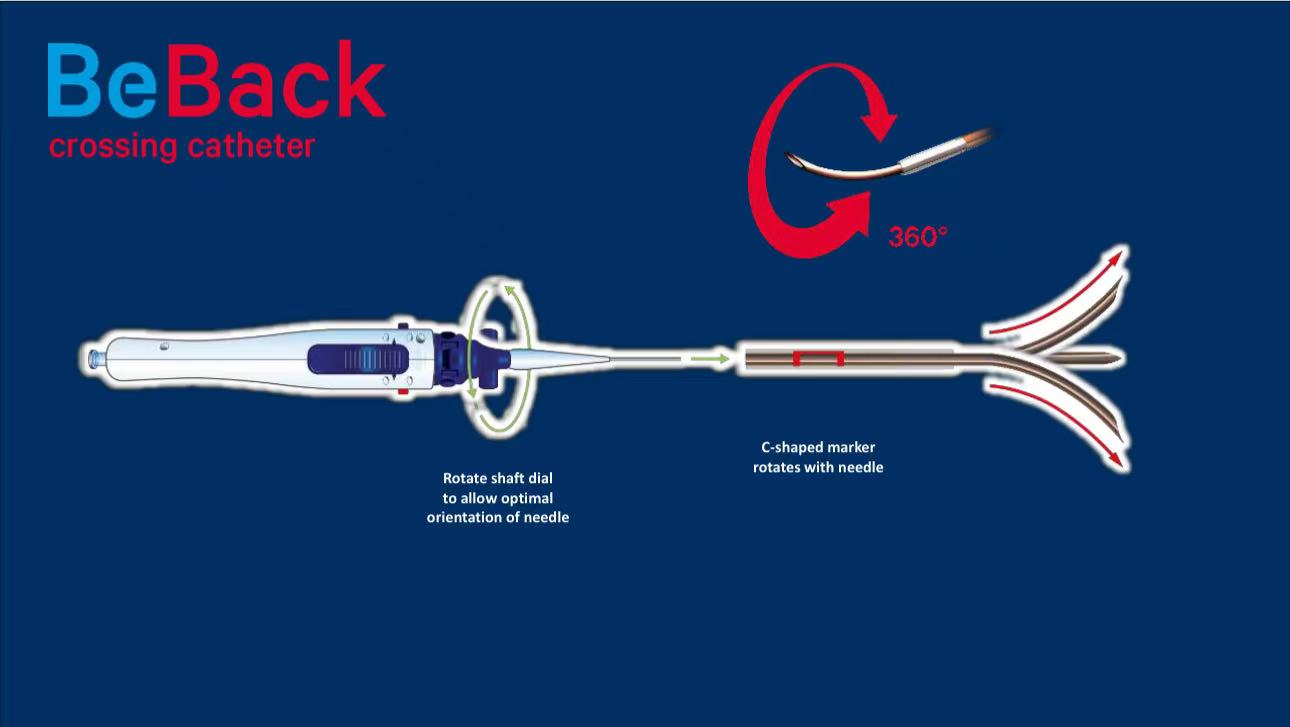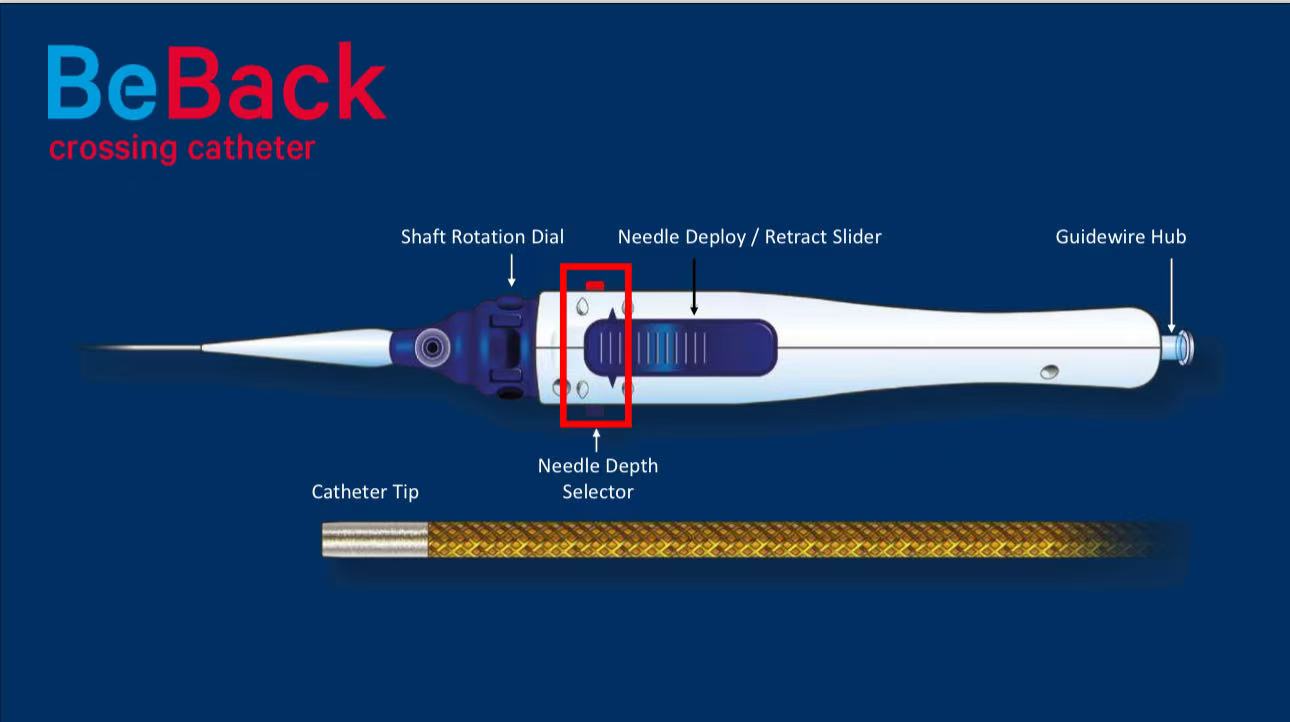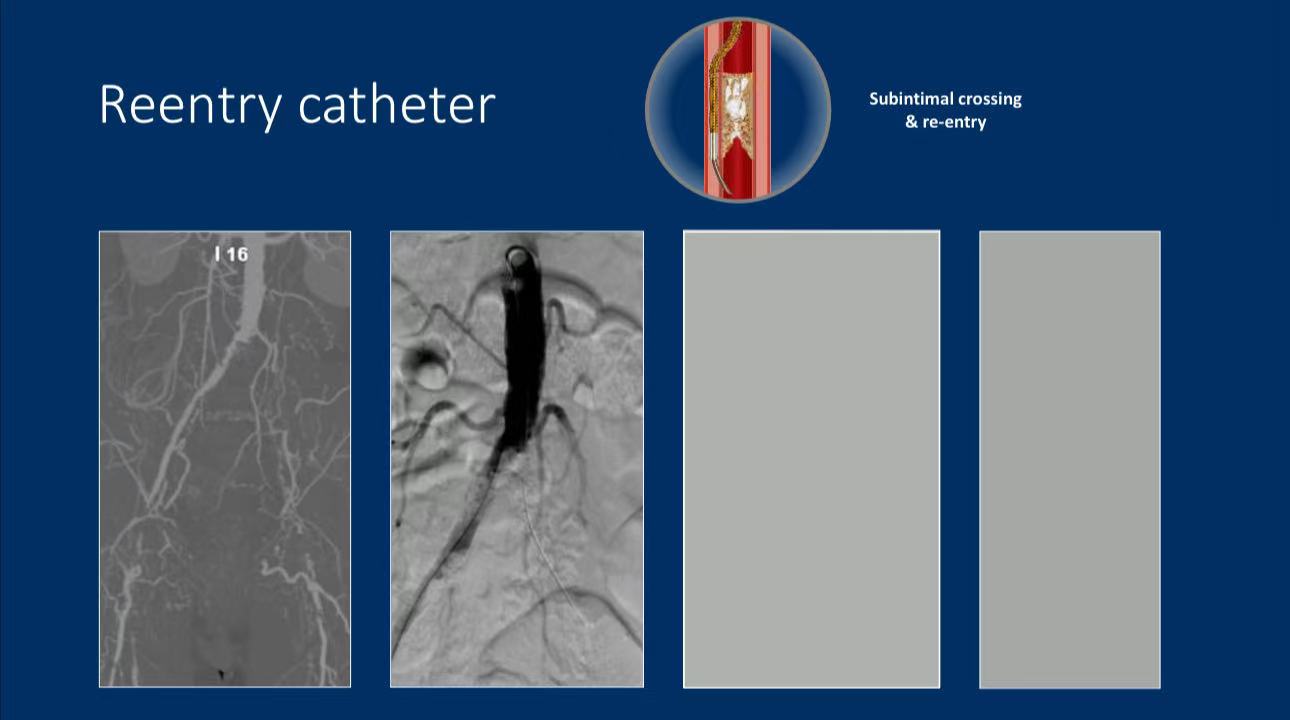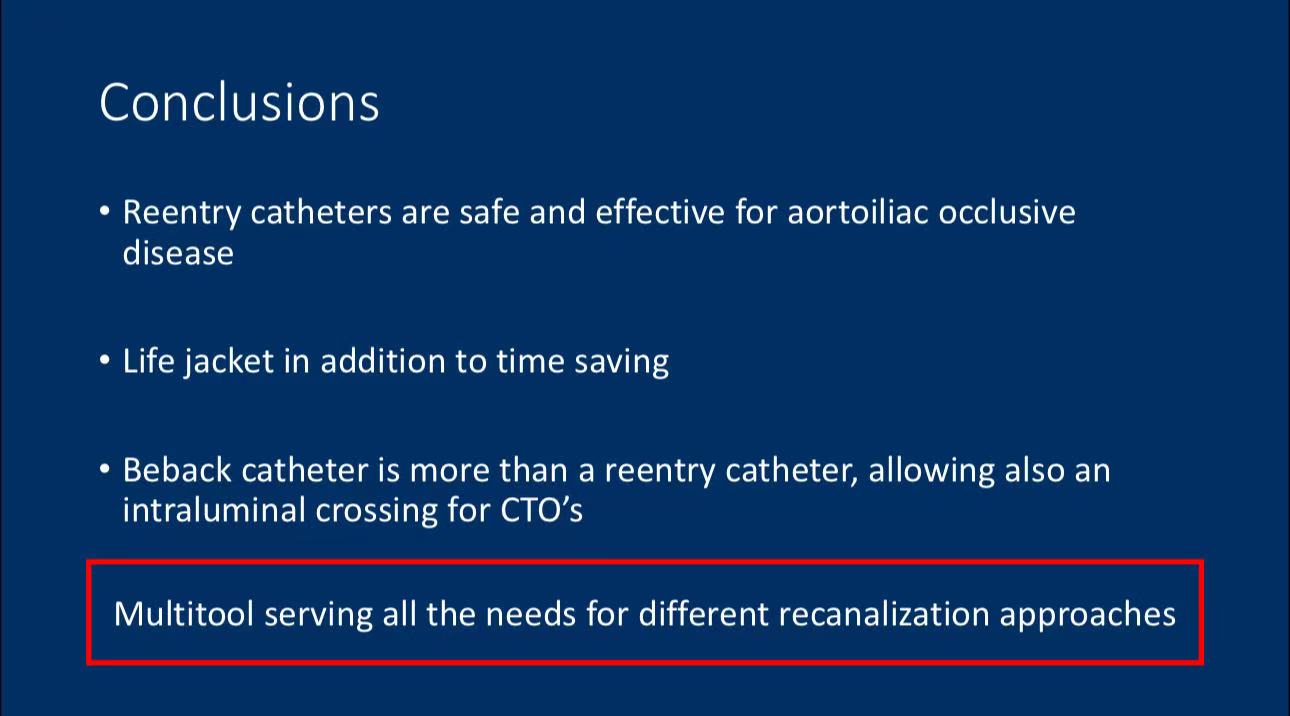Author: Dr. Pablo Del Canto Peruyera
Institution: Vascular Surgery, Cabueñes University Hospital, Gijón, Spain
Summary
This article discusses the application of bidirectional guidance technology in complex iliac artery occlusions (CTO), highlighting the use of re-entry catheter technology and cross-catheter techniques. Studies demonstrate that bidirectional guidance can significantly reduce operation time and improve procedural success rates, particularly in managing difficult iliac artery occlusions.
Introduction
Iliac artery occlusions are a common vascular condition, traditionally treated with surgical reconstruction or endovascular interventions. With advances in catheter technology, re-entry and cross-catheter techniques are becoming more widely used in these cases. This article aims to introduce the latest bidirectional guidance technology and showcase its outcomes in complex cases.
Re-entry Catheter Technology
•Procedure: Re-entry catheter technology uses a C-shaped marking system and needle-tip control, allowing precise puncture in CTO cases. This method is not only suitable for re-entry but also for other complex iliac artery lesions.
•Three Needle-Positioning Depths: Surgeons can adjust the needle-tip angle using a rotating axis, selecting one of three depths for puncture depending on the lesion characteristics. This ensures successful re-entry into the artery.

Clinical Application of Bidirectional Guidance
•Intraluminal Pathway: Bidirectional guidance technology combines re-entry and cross-catheters, enabling precise puncture and wire passage through the occlusion. Clinical data indicate a high success rate in CTO cases, particularly those with well-defined occlusions from preoperative imaging.

•Case Study: A 67-year-old male presented with chronic ischemia due to iliac artery occlusion. Using bidirectional guidance technology, the occlusion was successfully crossed, restoring normal blood flow post-operation, with no restenosis after six months.

Conclusion
1. Bidirectional guidance, utilizing re-entry and cross-catheter technologies, significantly enhances the success rate in complex iliac artery occlusions.
2. This technology not only saves procedural time but also reduces patient radiation exposure and complication rates, suggesting broader application in future complex cases.
3. The versatility of re-entry catheters offers surgeons more options, especially when dealing with difficult occlusions where multi-angle adjustments are crucial.

Contact Us
For submissions, please contact us at: endovascluar@simtomax.cn
Thank you for your attention, and let’s continue to safeguard health together!
More international information available at:
•Facebook: Vasco Knight
•Instagram: knight_vasco
Ins


